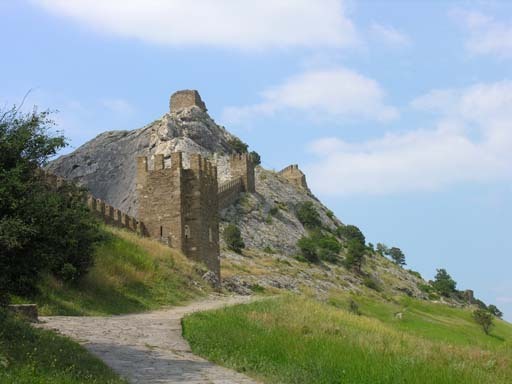Crimean historians and archaeologists are planning to make it possible for the tourists to visit the Peninsula for excavation. The representatives of the Ministry of Culture are protesting, because this kind of tourism can contribute to the looting of burials.
According to the popularizations of science, the burial grounds and the fortifications of Crimea, as well as other interesting historical sites will attract more tourists to the peninsula, who are interested in cognitive, archaeological tourism.
The idea of using tourists as a labor force in the archaeological excavation was released to the public in a press-conference held in Simferopol by the Professor of Touraine National University V.I. Vernadsky and the representative of the charity foundation Heritage of the Millennium I. Khrapunov. In his view, tourists should be given an opportunity to get a unique experience and give the opportunity to see what no one has yet seen.

On the other hand, it’s really not that difficult – so far during the excavations, including those in the Crimea, the work of the first-year students of historical faculties of universities and institutes are employed. Students come to practice, knowing little about the practical archeology. Teachers and students of archeology direct them, who explain new people each year the same rules of conduct on the dig. Could the work of history fan tourists be managed with the same success?
But if students are digging for free and are dependent on the management, the tourists then will have to pay for the participation in the excavation, and the relations with the leadership of the expedition will be based on fundamentally different level. A few people are ready for “commercial relations” with the tourists in scientific expeditions. Besides, all the finds from the historical monument are removed and carefully recorded for research purposes, and to ensure that tourists will not want to hide the gold beads from the burial ground, or an ancient Greek painted vessel is almost impossible. And the scientific value of these excavations will be very doubtful.
Nevertheless, the Heritage of the Millennium Foundation with the support of the International Fund for “Eastern Europe” has already launched a project to establish the Center of archaeological tourism in Crimea. The purpose of it will be to introduce representatives of the tourist industry and travelers to the archaeological heritage of the Crimea and the capabilities of its use for tourism purposes.
Among the objects on the excavation of which it is planned to attract tourists are such famous historical sites, as Sudak fortress, Reserve Chersonesos, the cave city Chufut-Calais, Greco-Scythian ancient settlement of Kara-Tobe and other monuments.
We recall that there are more than 8 thousand historical monuments in Crimea, among which more than the half are archaeological. There are Scythian burial mounds and settlement in peninsula, prehistoric campsites, the Greek cities and Roman fortresses, burial era of the Great migrations of people, Byzantine and Genoese fortresses, medieval “cave” cities.
Excavations have always been an exciting and entertaining activity in Crimea, and if they will be available to tourists, it will attract many history fans to the peninsula.


